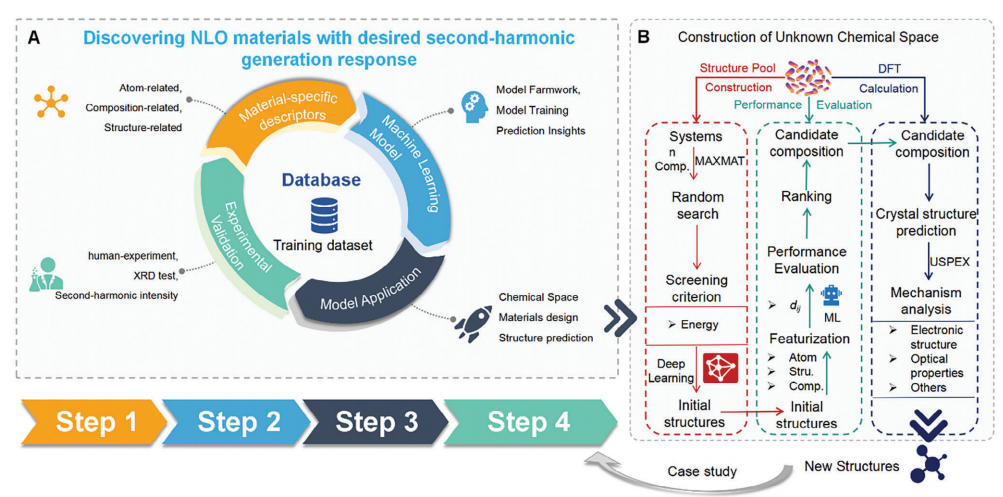A New Approach Proposed: Accelerating The Theoretical Design Of Nonlinear Optical Materials
Editor: YANG Zhihua | Mar 10,2025
Recently, a research team from the Xinjiang Technical Institute of Physics & Chemistr (XTIPC), Chinese Academy of Sciences, made progress in designing novel nonlinear optical materials with the framework of machine learning. They proposed a new strategy to explore unknown chemical spaces through machine learning methods, achieving quantitative prediction of frequency doubling coefficients for nonlinear optical multivariate complex systems ranging from infrared to ultraviolet and deep ultraviolet using machine learning, providing a subsequent theoretical guidance tool for the design of new optical materials.
The efficient experimental exploration of innovative nonlinear optical materials has long been a challenging task due to the vast chemical space and the lack of suitable theoretical prediction frameworks. The Crystal Materials Research Center at the XTIPC has proposed an innovative theoretical design and prediction approach, integrating machine learning techniques with crystal structure generation methods to guide the synthesis of new nonlinear optical materials using descriptor information. This study developed a machine learning model trained to predict the maximum second harmonic generation (SHG) coefficient of nonlinear optical materials. By combining chemical composition and structural descriptors, the model enables systematic analysis of the structure-property relationships. To further enhance the efficiency of discovering novel nonlinear optical materials, the research introduced a rapid crystal structure generation technique, establishing an effective predictive workflow for exploring unknown chemical space (Figure 1). With this theoretical framework, simply inputting a crystal structure file allows the SHG coefficient of the target chemical structure to be obtained in a short time. Using infrared nonlinear optical materials as a case study, this predictive workflow successfully identified seven infrared compounds with desirable SHG responses, one of which was experimentally synthesized and characterized (CsIn5Se8, d24>1×AgGaS2), validating the effectiveness of the theoretical design approach. This work addresses the challenge of quantitatively predicting SHG coefficients using machine learning models, providing an efficient theoretical guide for accelerating the exploration and synthesis of new nonlinear optical materials with strong SHG responses.
The related research results were published as a Research Article in Small (Small, 2025, 2500540). This research was supported by funding from the National Natural Science Foundation of China, the Chinese Academy of Sciences, and projects from the Xinjiang Uygur Autonomous Region.

Figure 1. Discovering NLO materials with desired second harmonic generation responses.
(Image by Shilie Pan's group)
附件下载:
 (86) 991-3838931
(86) 991-3838931 lhskj@ms.xjb.ac.cn
lhskj@ms.xjb.ac.cn (86)991-3838957
(86)991-3838957 40-1 Beijing Road
Urumqi, XinjiangChina
40-1 Beijing Road
Urumqi, XinjiangChina